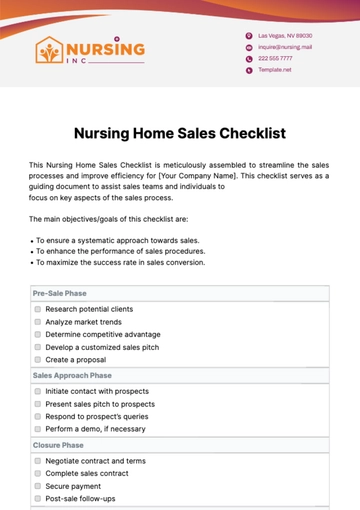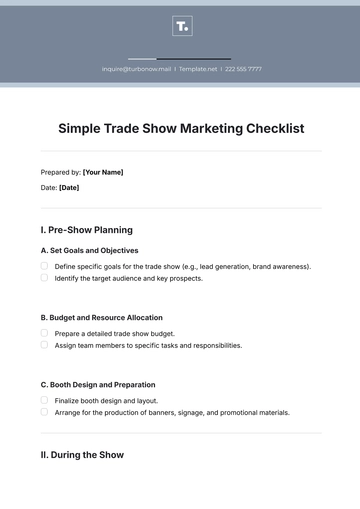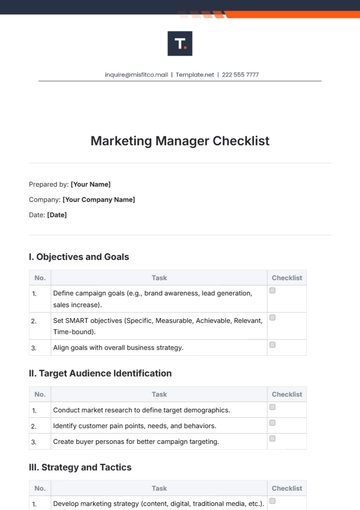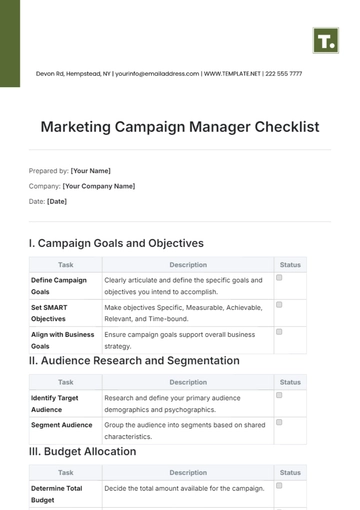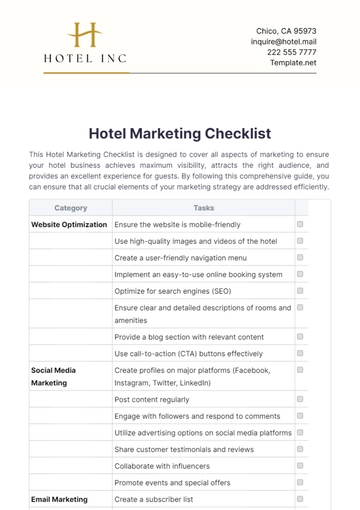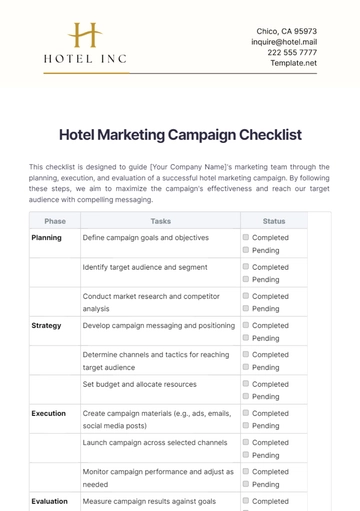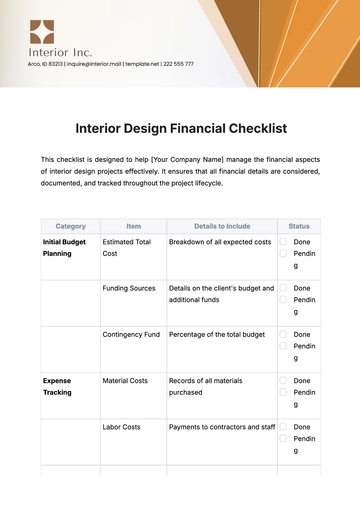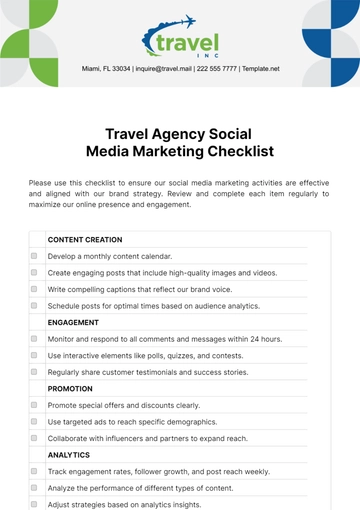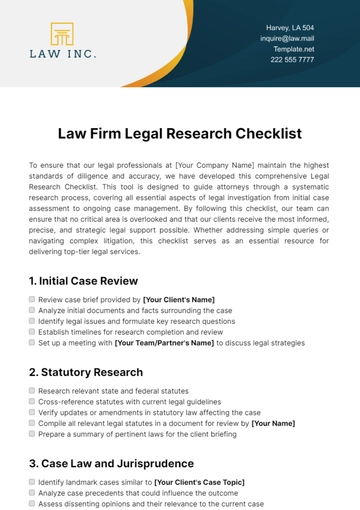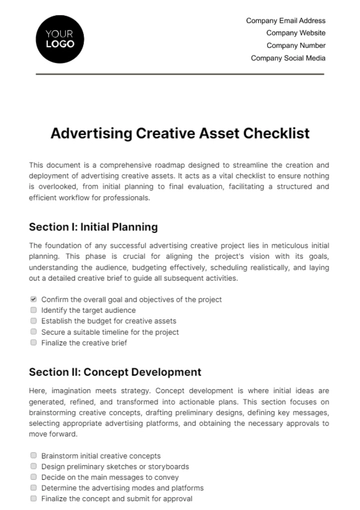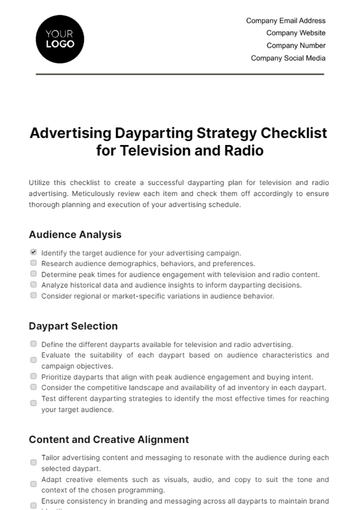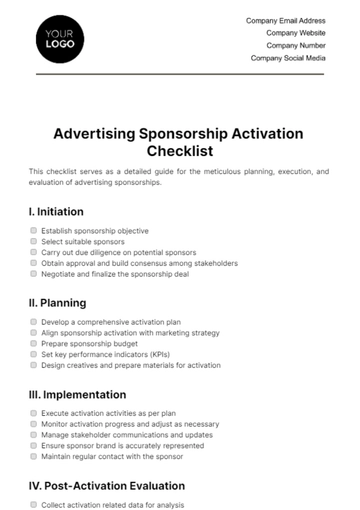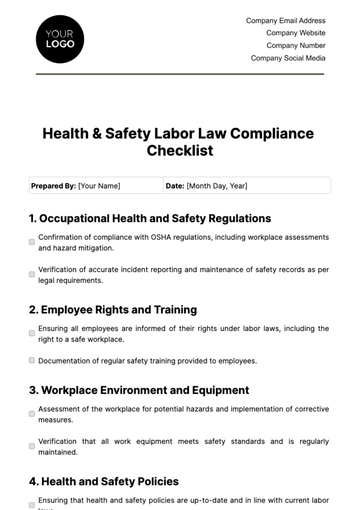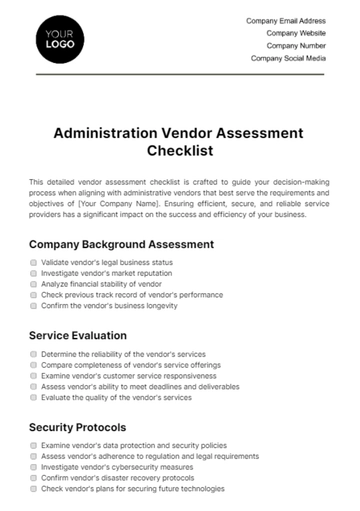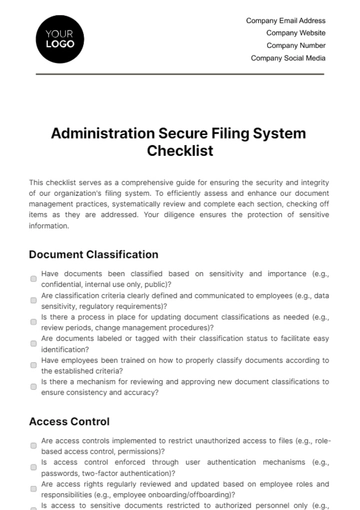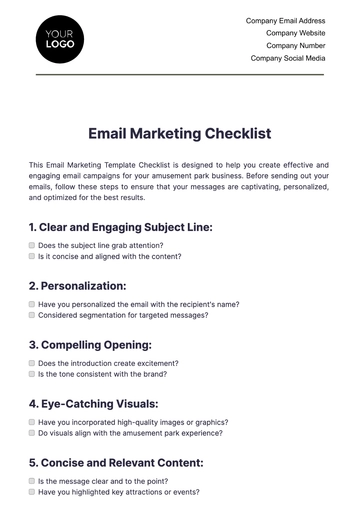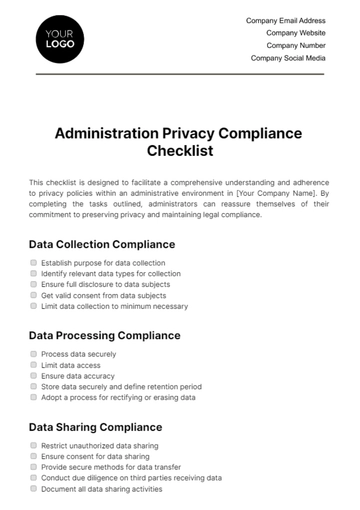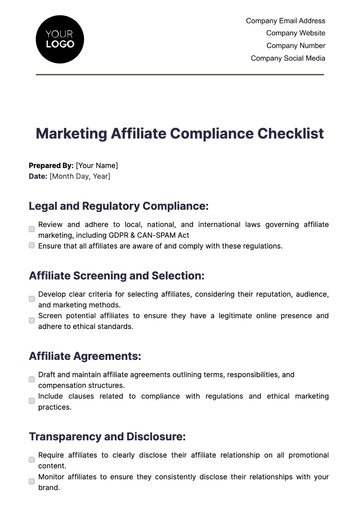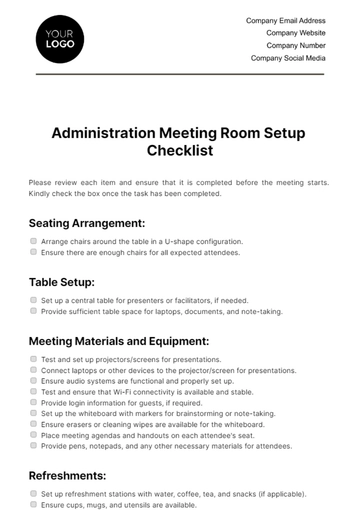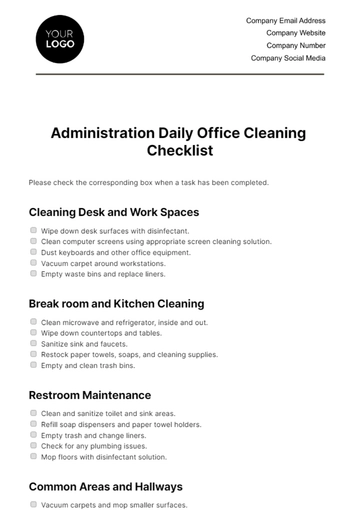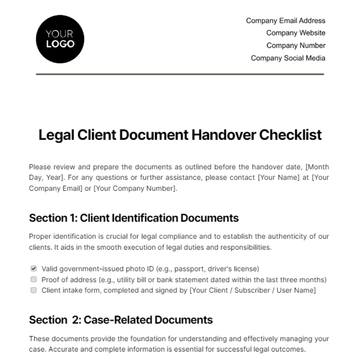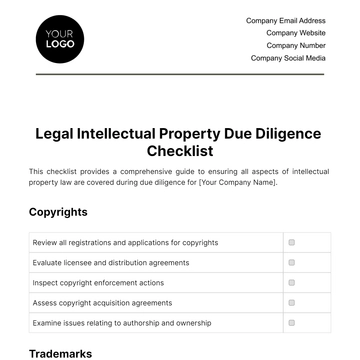Free Restaurant Marketing Checklist
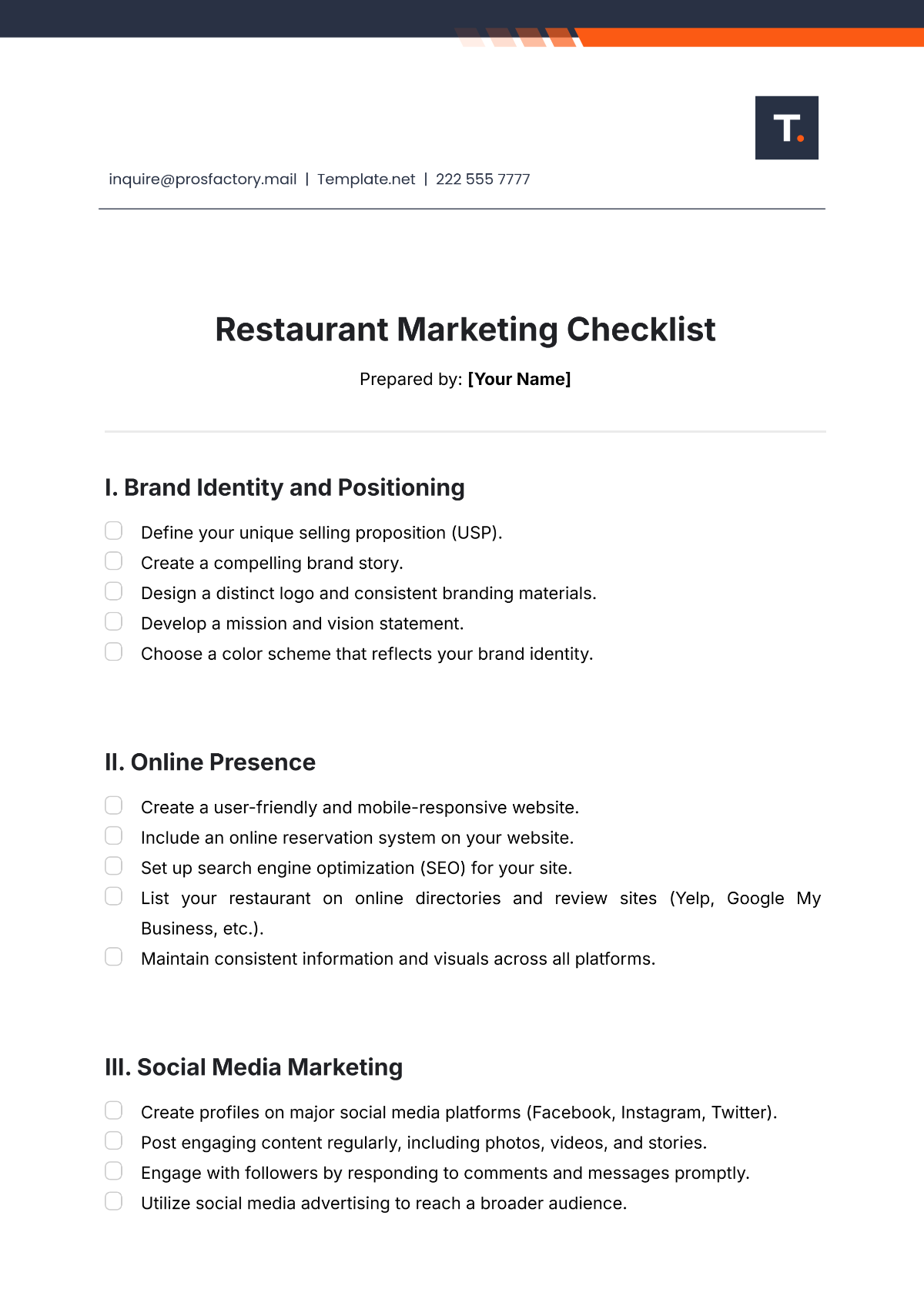
Prepared by: [Your Name]
I. Brand Identity and Positioning
Define your unique selling proposition (USP).
Create a compelling brand story.
Design a distinct logo and consistent branding materials.
Develop a mission and vision statement.
Choose a color scheme that reflects your brand identity.
II. Online Presence
Create a user-friendly and mobile-responsive website.
Include an online reservation system on your website.
Set up search engine optimization (SEO) for your site.
List your restaurant on online directories and review sites (Yelp, Google My Business, etc.).
Maintain consistent information and visuals across all platforms.
III. Social Media Marketing
Create profiles on major social media platforms (Facebook, Instagram, Twitter).
Post engaging content regularly, including photos, videos, and stories.
Engage with followers by responding to comments and messages promptly.
Utilize social media advertising to reach a broader audience.
Collaborate with food bloggers and influencers to promote your restaurant.
IV. Email Marketing
Build a customer email list.
Send regular newsletters with updates, promotions, and events.
Personalize your email communications.
Segment your email list based on customer preferences and behaviors.
Analyze email marketing metrics and adjust strategies accordingly.
V. Local Marketing
Participate in local events and food festivals.
Collaborate with nearby businesses for cross-promotion.
Offer special deals to local customers and community members.
Host community events and fundraisers at your restaurant.
Distribute flyers and promotional materials in the neighborhood.
VI. Customer Relationship Management
Implement a loyalty program to reward repeat customers.
Collect and respond to customer feedback.
Celebrate customer birthdays with special offers.
Provide excellent customer service to enhance the dining experience.
Utilize a CRM system to manage customer interactions and data.
VII. Advertising and Promotions
Run targeted online advertisements (Google Ads, Facebook Ads).
Offer limited-time promotions to create urgency.
Create seasonal menus or special dishes to attract customers.
Advertise in local newspapers, magazines, or radio stations.
Partner with food delivery services for exclusive promotions.
- 100% Customizable, free editor
- Access 1 Million+ Templates, photo’s & graphics
- Download or share as a template
- Click and replace photos, graphics, text, backgrounds
- Resize, crop, AI write & more
- Access advanced editor
Unleash the power of persuasion with Template.net's Restaurant Marketing Checklist Template. Designed for gastronomic entrepreneurs, this editable marvel compiles essential tasks to elevate your restaurant's visibility and profitability. With our AI editor tool, customization is seamless, ensuring the checklist aligns perfectly with your marketing strategy. Maximize your promotional efforts and attract diners like never before. Kickstart your marketing journey today!
You may also like
- Cleaning Checklist
- Daily Checklist
- Travel Checklist
- Self Care Checklist
- Risk Assessment Checklist
- Onboarding Checklist
- Quality Checklist
- Compliance Checklist
- Audit Checklist
- Registry Checklist
- HR Checklist
- Restaurant Checklist
- Checklist Layout
- Creative Checklist
- Sales Checklist
- Construction Checklist
- Task Checklist
- Professional Checklist
- Hotel Checklist
- Employee Checklist
- Moving Checklist
- Marketing Checklist
- Accounting Checklist
- Camping Checklist
- Packing Checklist
- Real Estate Checklist
- Cleaning Checklist Service
- New Employee Checklist
- Food Checklist
- Home Inspection Checklist
- Advertising Checklist
- Event Checklist
- SEO Checklist
- Assessment Checklist
- Inspection Checklist
- Baby Registry Checklist
- Induction Checklist
- Employee Training Checklist
- Medical Checklist
- Safety Checklist
- Site Checklist
- Job Checklist
- Service Checklist
- Nanny Checklist
- Building Checklist
- Work Checklist
- Office Checklist
- Training Checklist
- Website Checklist
- IT and Software Checklist
- Performance Checklist
- Project Checklist
- Startup Checklist
- Education Checklist
- Home Checklist
- School Checklist
- Maintenance Checklist
- Planning Checklist
- Manager Checklist
- Wedding Checklist
- Vehicle Checklist
- Travel Agency Checklist
- Vehicle Inspection Checklist
- Interior Design Checklist
- Backpacking Checklist
- Business Checklist
- Legal Checklist
- Nursing Home Checklist
- Weekly Checklist
- Recruitment Checklist
- Salon Checklist
- Baby Checklist
- Equipment Checklist
- Trade Show Checklist
- Party Checklist
- Hospital Bag Checklist
- Evaluation Checklist
- Agency Checklist
- First Apartment Checklist
- Hiring Checklist
- Opening Checklist
- Small Business Checklist
- Rental Checklist
- College Dorm Checklist
- New Puppy Checklist
- University Checklist
- Building Maintenance Checklist
- Work From Home Checklist
- Student Checklist
- Application Checklist
